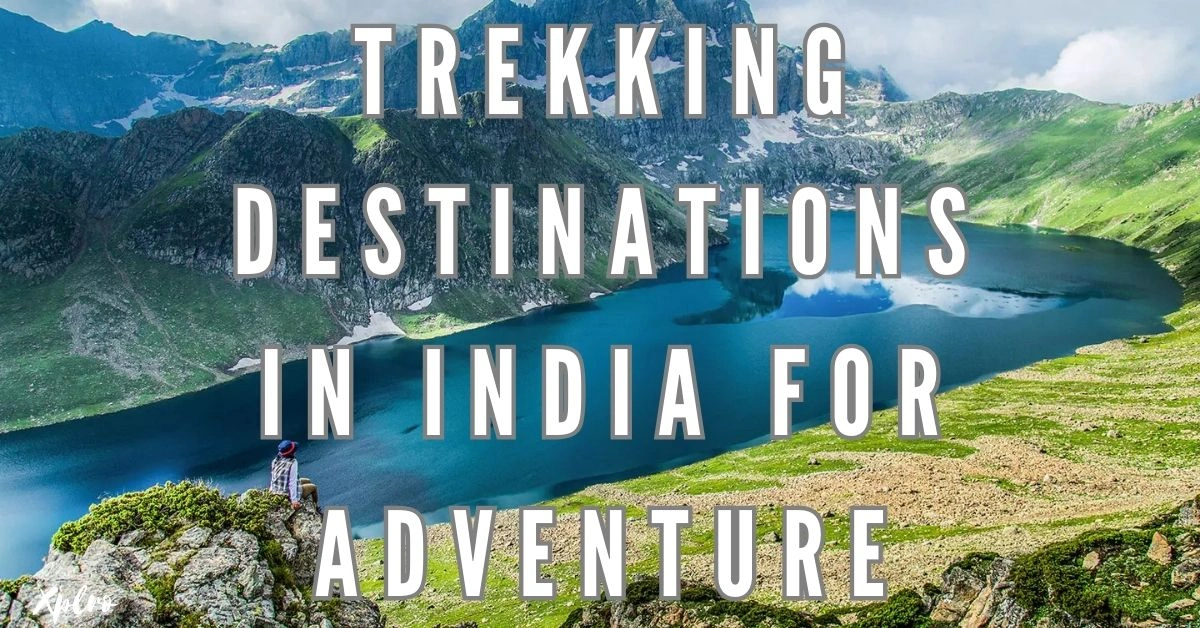Top 10 Trekking Destinations in India for Adventure; India, with its diverse landscapes, offers a wide range of trekking experiences. From the towering Himalayas to the lush Western Ghats, there’s a trail for every adventurer. Whether you’re seeking challenging expeditions or peaceful hikes, India’s trekking destinations provide stunning scenery, cultural experiences, and unforgettable memories.
- 1. Chadar Trek, Ladakh
- 2. Roopkund Trek, Uttarakhand
- 3. Valley of Flowers Trek, Uttarakhand
- 4. Goecha La Trek, Sikkim
- 5. Markha Valley Trek, Ladakh
- 6. Kedarkantha Trek, Uttarakhand
- 7. Hampta Pass Trek, Himachal Pradesh
- 8. Sandakphu Trek, West Bengal
- 9. Kuari Pass Trek, Uttarakhand
- 10. Tarsar Marsar Trek, Jammu & Kashmir
- FAQs
1. Chadar Trek, Ladakh
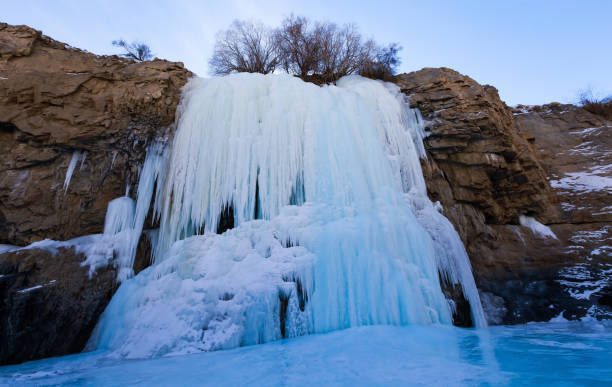
The Chadar Trek is a unique and challenging adventure that takes you across the frozen Zanskar River in the Himalayas. With temperatures dropping to -30°C, it’s a truly unforgettable experience.
Why Visit:
- Unique Experience: Walk on a frozen river, a one-of-a-kind adventure.
- Stunning Scenery: Witness frozen waterfalls and snow-covered mountains.
- Cultural Experience: Interact with the Zanskari people.
Difficulty Level:
- Challenging: The extreme cold and high altitude make it a difficult trek.
Best Time to Visit:
- January to February: The river is frozen during these months.
2. Roopkund Trek, Uttarakhand
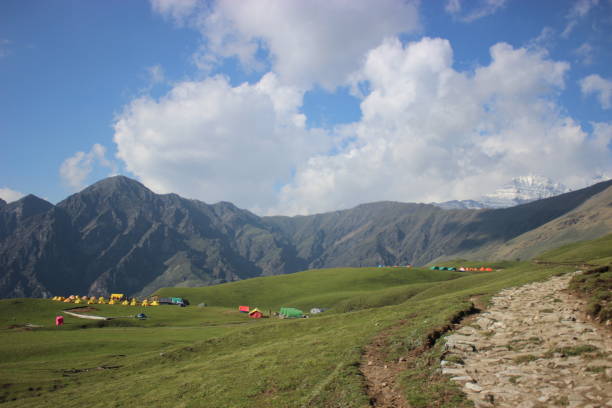
The Roopkund Trek, also known as the “Mystery Lake Trek,” is a captivating journey through the Himalayas. It’s famous for its stunning alpine meadows, snow-capped peaks, and the intriguing skeletal remains found near Roopkund Lake.
Why Visit:
- Mysterious Lake: Explore the mystery surrounding the skeletal remains at Roopkund Lake.
- Scenic Beauty: Witness breathtaking views of Mount Trishul and Nanda Ghunti.
- Alpine Meadows: Hike through the lush meadows of Ali Bugyal and Bedni Bugyal.
Difficulty Level:
- Moderate to Challenging: The trek involves steep climbs and high altitude.
Best Time to Visit:
- May to June and September to October: The weather is pleasant and ideal for trekking.
3. Valley of Flowers Trek, Uttarakhand
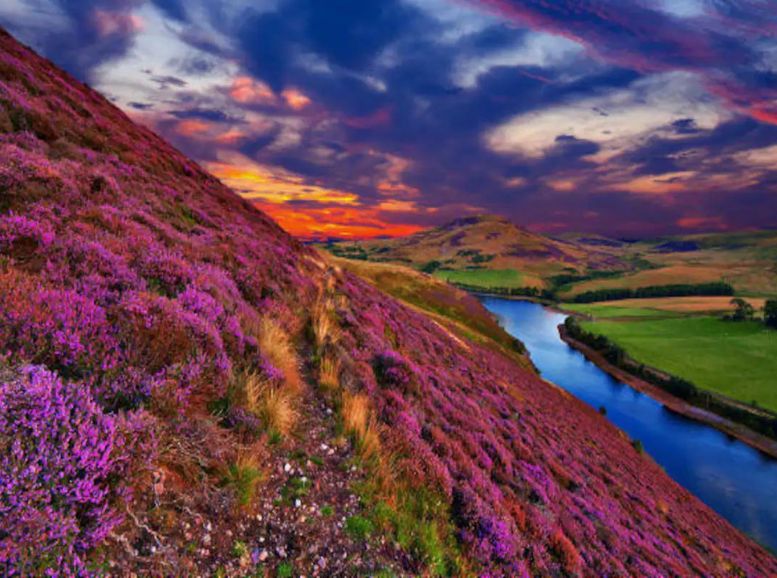
The Valley of Flowers Trek offers a breathtaking experience for nature lovers. This UNESCO World Heritage site, located in the Nanda Devi Biosphere Reserve, is a paradise of vibrant, colorful flowers.
Why Visit:
- Floral Extravaganza: Witness a valley carpeted with thousands of species of flowers.
- Scenic Beauty: Enjoy the stunning views of waterfalls, streams, and snow-capped peaks.
Difficulty Level:
- Easy to Moderate: Suitable for beginners and those seeking a more relaxed trek.
Best Time to Visit:
- July to September: This is the peak blooming season, ensuring a vibrant and colorful experience.
4. Goecha La Trek, Sikkim
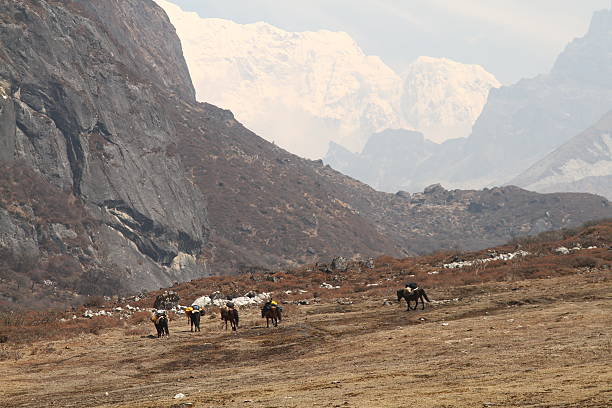
The Goecha La Trek in Sikkim offers a breathtaking journey into the Himalayas. With its stunning views of Mount Kanchenjunga, the third-highest peak in the world, and its enchanting landscapes, this trek is a must-do for adventure seekers.
Why Visit:
- Majestic Views: Enjoy unparalleled views of Mount Kanchenjunga and other Himalayan peaks.
- Scenic Beauty: Trek through dense forests, alpine meadows, and past pristine mountain lakes.
- Sunrise Experience: Witness a breathtaking sunrise from Dzongri Top.
Difficulty Level:
- Moderate to Challenging: The trek involves high-altitude terrain and requires moderate fitness.
Best Time to Visit:
- April to June and September to November: The weather is pleasant and ideal for trekking during these months.
5. Markha Valley Trek, Ladakh
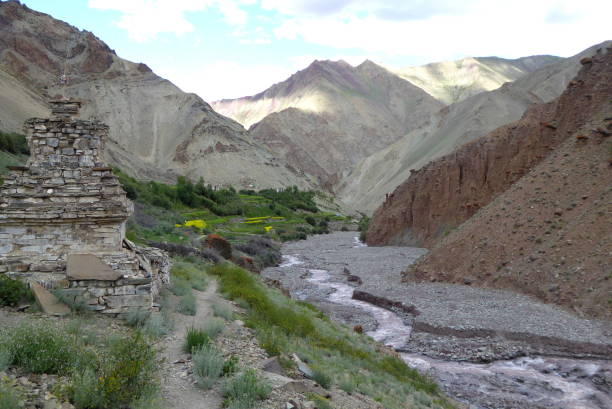
The Markha Valley Trek is a popular choice for those exploring Ladakh, offering a combination of adventure, culture, and stunning landscapes. The trek takes you through picturesque Ladakhi villages, monasteries, and high mountain passes, providing unforgettable experiences.
Why Visit:
- Breathtaking Scenery: Enjoy the stunning beauty of the barren Ladakhi landscape.
- Cultural Exploration: Discover remote Ladakhi villages and monasteries.
- Adventure: Cross high passes like Kongmaru La at 17,060 feet.
Difficulty Level:
- Moderate to Challenging: The trek involves river crossings and steep climbs.
Best Time to Visit:
- June to September: The weather is favorable for trekking during these months.
6. Kedarkantha Trek, Uttarakhand
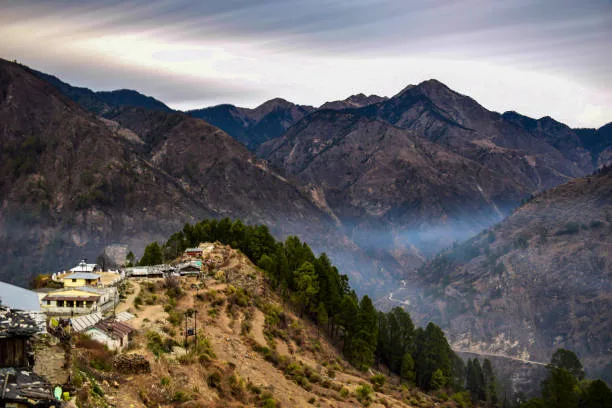
The Kedarkantha Trek is a popular winter trek in India, offering breathtaking views of snow-covered landscapes. It’s perfect for beginners seeking a challenging yet rewarding winter adventure.
Why Visit:
- Winter Wonderland: Experience the magic of snow-covered forests and peaks.
- Scenic Beauty: Enjoy stunning views of Himalayan peaks.
Highlights:
- Snow-Covered Landscapes: Trek through mesmerizing snow-covered terrain.
- Scenic Camping: Camp in picturesque clearings surrounded by pine forests.
- Summit Views: Enjoy panoramic views of Swargarohini, Bandarpoonch, and Black Peak.
Difficulty Level:
- Easy to Moderate: Suitable for beginners and those seeking a moderate challenge.
Best Time to Visit:
- December to April: The trek is best experienced during winter for snow-covered landscapes.
7. Hampta Pass Trek, Himachal Pradesh
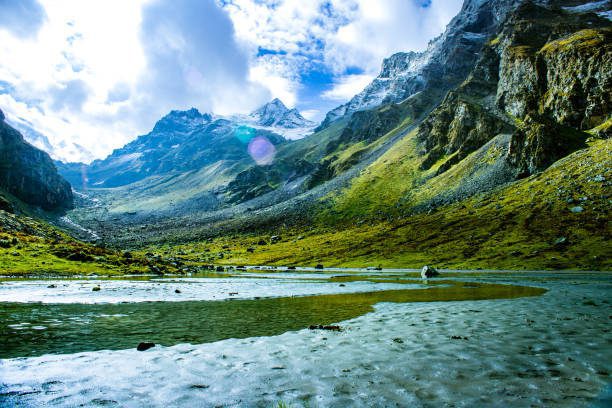
The Hampta Pass Trek offers a unique and scenic adventure, showcasing the dramatic contrast between the lush green valleys of Kullu and the barren, cold desert of Lahaul.
Why Visit:
- Diverse Landscapes: Experience the transition from green valleys to a cold desert.
- Scenic Beauty: Camp beside the stunning Chandratal Lake.
- Adventure: Cross the Hampta Pass and witness the changing terrain.
Difficulty Level:
- Moderate: The trek involves steep ascents and descents.
Best Time to Visit:
- June to September: The pass is free of snow during these months.
8. Sandakphu Trek, West Bengal
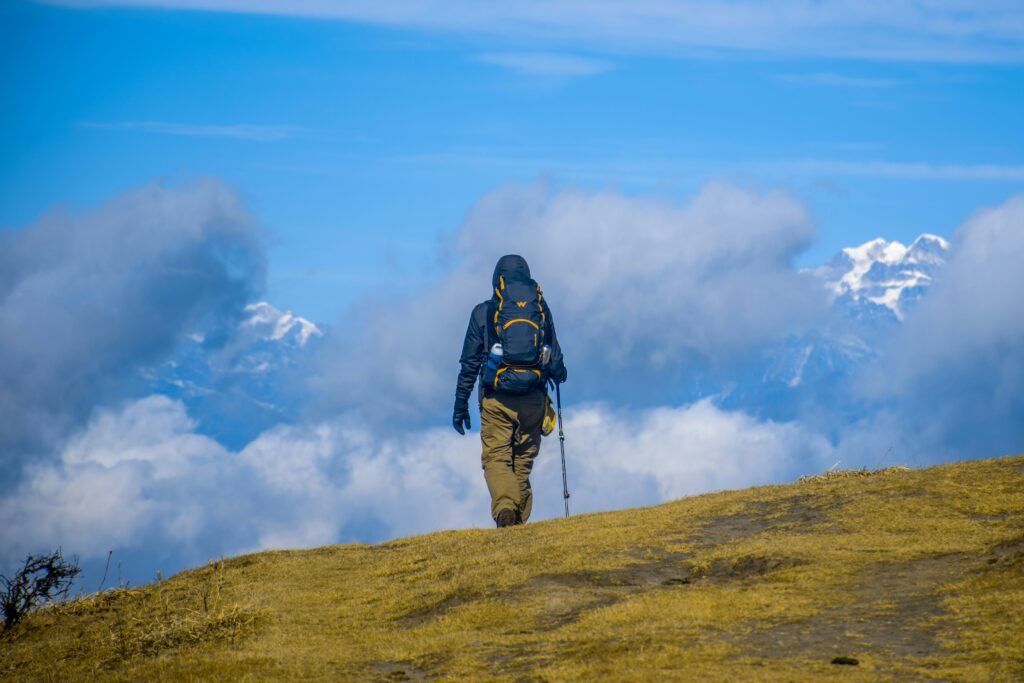
The Sandakphu Trek offers a breathtaking experience, with unparalleled views of the four tallest mountains in the world: Mount Everest, Kangchenjunga, Lhotse, and Makalu. Located on the India-Nepal border, this trek takes you through picturesque landscapes and offers unforgettable memories.
Why Visit:
- Majestic Views: Witness the awe-inspiring beauty of the world’s tallest peaks.
- Scenic Beauty: Trek through rhododendron forests, villages, and rolling hills.
Highlights:
- Panoramic Views: Enjoy unmatched views of Mount Everest and Kanchenjunga.
- Wildlife: Explore the Singalila National Park, home to the elusive red panda.
- Sunrise Experience: Witness stunning sunrises over the Himalayan range.
Difficulty Level:
- Moderate: The trek involves long walks and gradual climbs.
Best Time to Visit:
- April to May and October to December: The weather is pleasant and ideal for trekking during these months.
9. Kuari Pass Trek, Uttarakhand
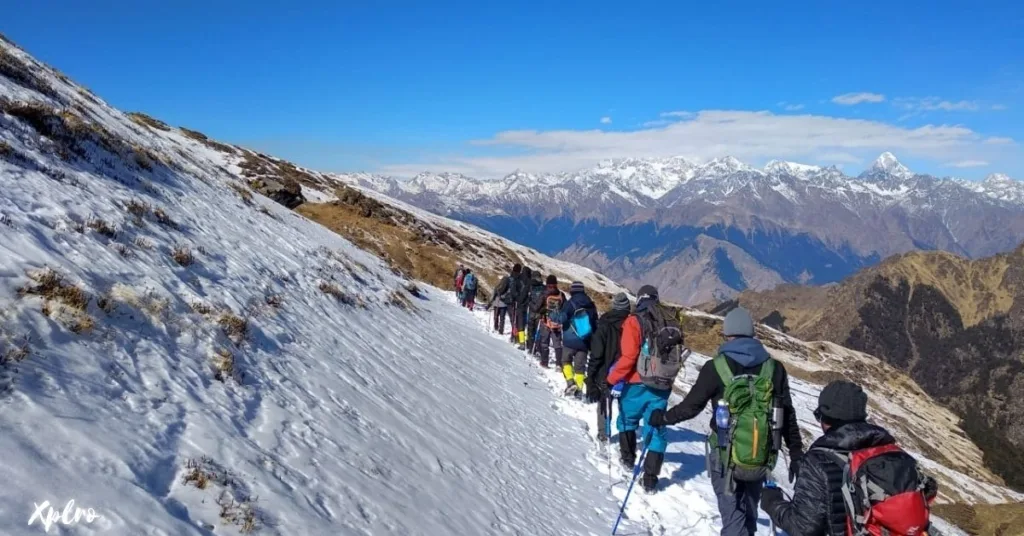
The Kuari Pass Trek, also known as the “Curzon Trail,” offers a breathtaking introduction to the Himalayas. With its stunning views of towering peaks like Nanda Devi, Dronagiri, and Hathi Ghoda, and its picturesque landscapes, this trek is perfect for beginners seeking a rewarding adventure.
Why Visit:
- Majestic Views: Enjoy panoramic views of the Himalayan giants.
- Scenic Beauty: Trek through dense forests and open meadows.
Highlights:
- Panoramic Views: Witness the breathtaking beauty of the Himalayan peaks.
- Scenic Trekking: Explore dense forests and open meadows.
- High-Altitude Camping: Camp in scenic meadows at high altitudes.
Difficulty Level:
- Easy to Moderate: Suitable for first-time trekkers and those seeking a moderate challenge.
Best Time to Visit:
- April to June and September to November: The weather is pleasant and ideal for trekking during these months.
10. Tarsar Marsar Trek, Jammu & Kashmir
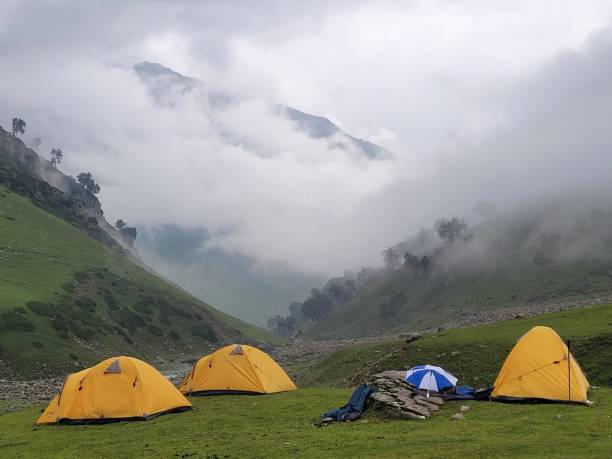
The Tarsar Marsar Trek offers a breathtaking journey through the picturesque Aru Valley in Kashmir. Known for its lush meadows, alpine lakes, and snow-capped peaks, this trek is a perfect blend of natural beauty and adventure.
Why Visit:
- Scenic Beauty: Explore the picturesque alpine lakes of Tarsar and Marsar.
- Natural Beauty: Hike through lush meadows and enjoy the clear mountain streams.
- Serene Camping: Camp at tranquil high-altitude locations surrounded by mountains.
Difficulty Level:
- Moderate: The trek involves steep climbs around the lakes.
Best Time to Visit:
- June to September: The summer months offer pleasant weather for trekking.
Conclusion – Trekking Destinations in India for Adventure
From the stark beauty of Ladakh to the lush valleys of Uttarakhand and the high-altitude passes of Himachal Pradesh, India’s diverse landscapes offer a treasure trove of trekking experiences for every adventurer. Each trek on Xplro.com, your one-stop travel guide website, promises unforgettable experiences. Explore the cultural gems tucked amidst the Himalayas, witness breathtaking natural beauty, and embark on thrilling adventures – India’s treks offer a unique blend for all.
FAQs
1. What is the best time to go trekking in India?
- The best time to embark on a trekking adventure in India largely depends on the region and the type of trek you choose. For treks in the Himalayan regions, the optimal trekking season is usually from May to June and September to November. This period offers pleasant weather, clear skies, and stable trekking conditions, especially for high-altitude treks. If you’re interested in trekking in Ladakh, such as the Chadar Trek, winter months from January to February are preferred, as the frozen river creates the trek path. On the other hand, if you’re trekking in the southern regions, such as the Western Ghats, the best time is from November to March to avoid the monsoons and the intense summer heat.
2. Are these treks suitable for beginners?
- While many treks in India cater to experienced trekkers, several routes are suitable for beginners. Treks like Valley of Flowers, Kedarkantha, and Kuari Pass offer an easier gradient and shorter durations, making them ideal for those new to trekking. These trails feature gradual ascents, well-marked paths, and moderate altitudes, making them manageable even for people with limited trekking experience. However, more challenging treks such as Goecha La and Chadar Trek demand a higher level of fitness and are better suited for trekkers with prior experience due to their steep climbs and extreme weather conditions.
3. How physically fit should I be to go on these treks?
- Trekking requires a decent level of physical fitness, particularly for high-altitude or multi-day treks. It’s important to build stamina and endurance before embarking on a trek. Cardiovascular exercises like running, cycling, and swimming can help prepare your body for the exertion involved in trekking. Strength training, particularly for your legs and core, is essential, as it helps in handling uphill climbs and descents. Treks like Roopkund and Goecha La involve steep climbs, so it’s crucial to have a good fitness foundation to ensure you can keep up with the demands of the trail.
4. What kind of gear is required for these treks?
- Trekking gear varies depending on the location and the season of the trek. However, there are some essential items you’ll need for any trek. A sturdy pair of trekking shoes with good ankle support is crucial, as is a durable backpack to carry your essentials. You should also pack a waterproof jacket, thermal clothing for colder regions, and comfortable, moisture-wicking layers. Treks in the Himalayas, especially those at higher altitudes like Chadar Trek or Goecha La, require more specialized gear, such as insulated boots, sub-zero sleeping bags, and thermal gloves to combat the cold.
5. Do I need any permits for these trekking routes?
- Many trekking destinations in India require permits, especially those within protected areas or national parks. For instance, treks like Roopkund in Uttarakhand and Goecha La in Sikkim necessitate forest department or national park permits. Similarly, the Chadar Trek in Ladakh requires both environmental fees and a medical fitness certificate due to the extreme conditions. These permits help regulate the number of trekkers and protect the environment. It’s recommended to check the specific requirements for your chosen trek, as trekking operators often assist in obtaining the necessary permits.
6. Are guided treks necessary, or can I trek solo?
- While many treks in India can be done solo, it’s often recommended to go with a guided group or hire a trekking operator, especially for high-altitude or remote regions. Treks like Goecha La, Chadar Trek, and Markha Valley present several challenges, including unpredictable weather, high altitudes, and rugged terrain, which make the presence of an experienced guide essential. Additionally, guided treks ensure your safety, provide logistical support, and enhance your overall experience by sharing local knowledge. For easier treks such as Valley of Flowers or Kedarkantha, trekking solo is more feasible, though proper preparation is still important.
7. What are the risks of altitude sickness, and how can it be managed?
- Altitude sickness, also known as Acute Mountain Sickness (AMS), is a significant concern on high-altitude treks like Roopkund, Goecha La, and Markha Valley. Symptoms typically include headaches, nausea, dizziness, and fatigue, which can worsen as you ascend if not managed properly. To minimize the risk of AMS, it’s essential to acclimatize gradually by allowing your body to adjust to the altitude over a few days. Staying hydrated, eating light, avoiding alcohol, and maintaining a slow pace also help prevent the onset of altitude sickness. If symptoms become severe, immediate descent is necessary.
8. What accommodation options are available during the treks?
- Accommodations during treks can vary widely, depending on the destination. On more remote and challenging treks like Markha Valley or Goecha La, camping is the primary option, with trekkers staying in tents at designated campsites. Many trekking operators provide tents, sleeping bags, and other camping equipment. On easier treks such as Valley of Flowers, you may find basic guesthouses or homestays in nearby villages, offering simple but comfortable lodging. In some cases, tea houses or local lodges may be available along the trekking route, providing trekkers with warm meals and shelter.
9. How long do these treks typically last?
- The duration of trekking expeditions varies depending on the difficulty of the trail and the distance covered. Shorter treks, such as Kedarkantha or Valley of Flowers, typically last between four to six days. These treks involve shorter distances and moderate ascents, making them manageable for a wider range of fitness levels. More challenging treks, like Goecha La or Markha Valley, usually take seven to ten days to complete, while extreme treks like Chadar Trek can take up to nine days due to the slow pace required by the harsh conditions. It’s important to choose a trek that aligns with your fitness level and time availability.
10. Can children or elderly people go on these treks?
- Whether children or elderly individuals can participate in a trek depends on the specific trek’s difficulty and the person’s fitness level. For easy-to-moderate treks like Kedarkantha or Valley of Flowers, children and elderly trekkers in good health can certainly participate. These treks involve gradual ascents and less strenuous terrain, making them accessible to a broader age group. However, for high-altitude treks such as Roopkund or Chadar Trek, which demand significant physical endurance and involve harsh conditions, it’s best for children and elderly people to avoid them unless they are in excellent physical condition.
11. What is the average cost of these treks?
- The cost of trekking in India can vary greatly depending on the location, duration, and level of service. Easier treks like Kedarkantha or Valley of Flowers are relatively affordable, with costs ranging from ₹6,000 to ₹12,000 for a four to six-day trek. This includes basic amenities like guides, accommodation, and permits. More advanced treks, such as Goecha La or Chadar Trek, are more expensive, ranging from ₹25,000 to ₹40,000, due to logistical challenges, guide fees, and specialized gear requirements. It’s always best to budget for additional expenses like gear rental, food, and transportation.
12. What are the environmental concerns I should be aware of while trekking?
- Trekking in India’s pristine landscapes comes with the responsibility of preserving the environment. It’s crucial to follow eco-friendly practices, such as carrying your waste back with you, avoiding single-use plastics, and respecting wildlife and local vegetation. The concept of “Leave No Trace” is important to ensure that the natural beauty of these trekking destinations is maintained for future generations. Many high-altitude regions, like those in Ladakh or Uttarakhand, are ecologically fragile, so it’s essential to minimize your environmental impact by staying on designated trails and avoiding any activities that could harm the ecosystem.




